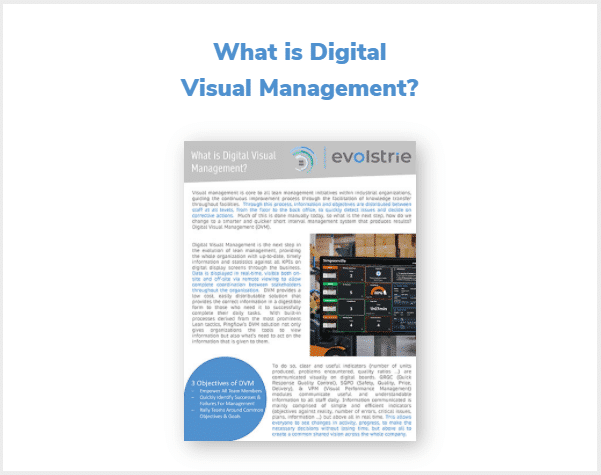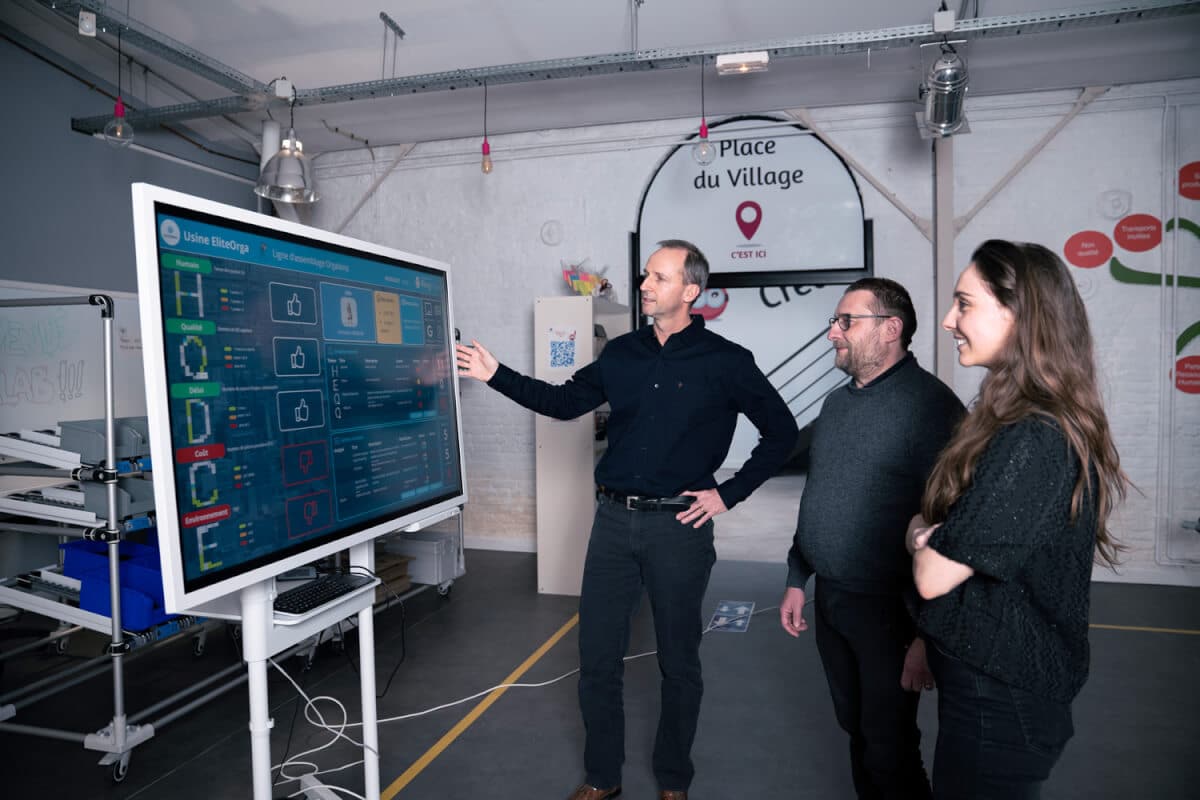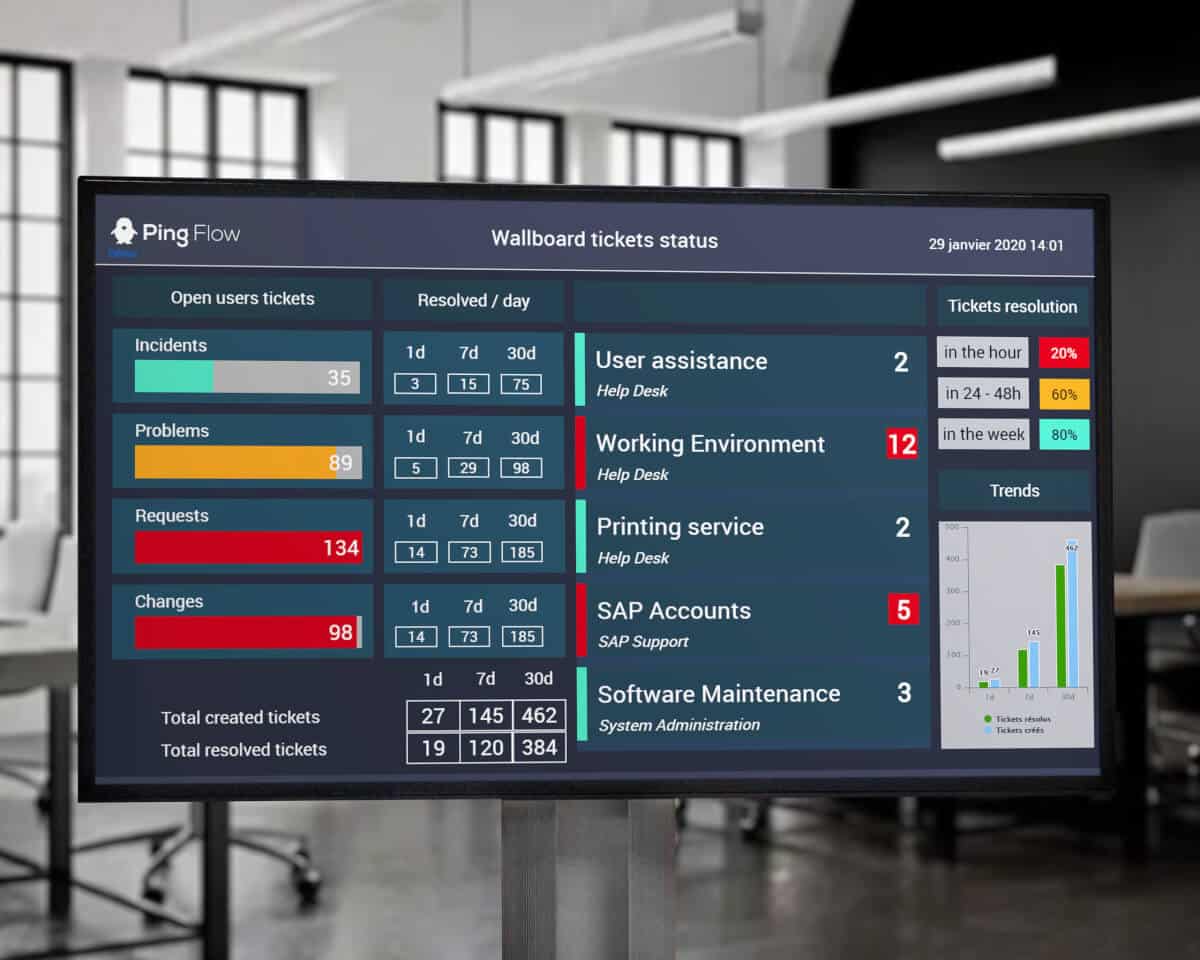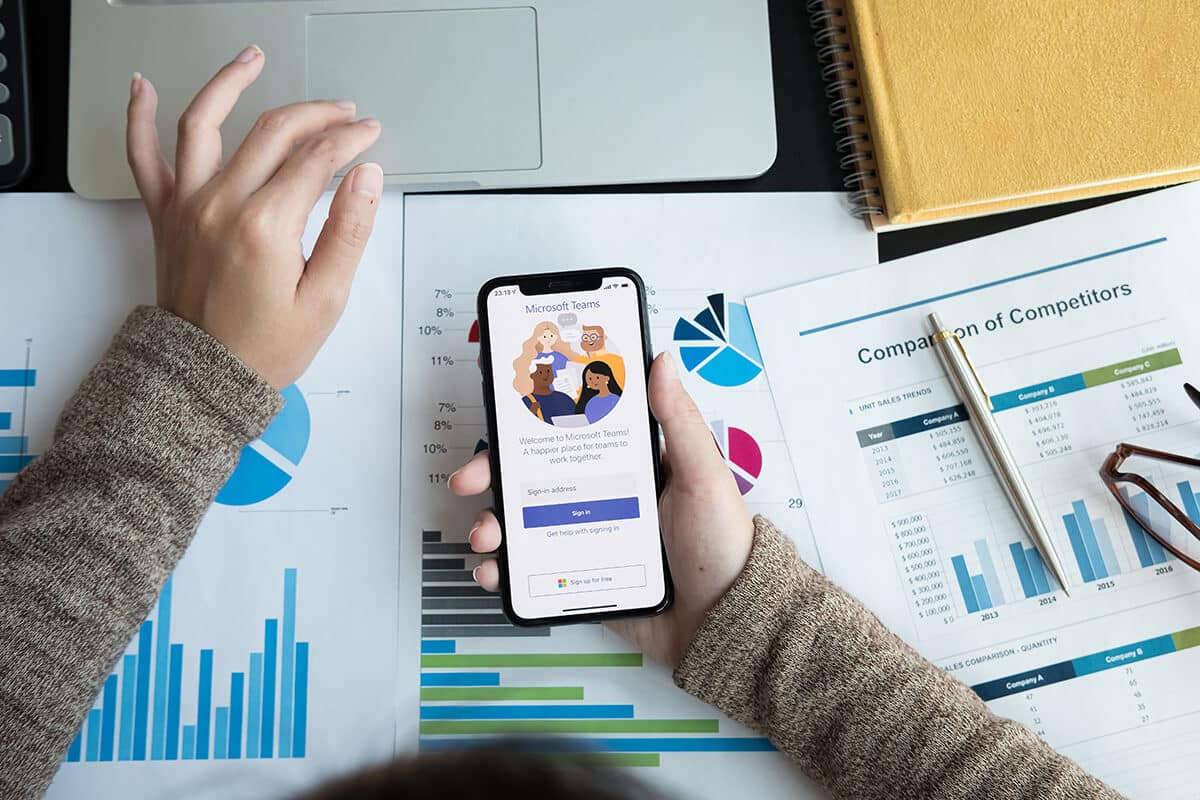Visual management is core to all lean management initiatives within industrial organizations, guiding the continuous improvement process through the facilitation of knowledge transfer throughout facilities. Through this process, information and objectives are distributed between staff at all levels, from the floor to the back office, to quickly detect issues and decide on corrective actions. Much of this is done manually today, so what is the next step, how do we change to a smarter and quicker short interval management system that produces results? Digital Visual Management (DVM).
Digital Visual Management is the next step in the evolution of lean management, providing the whole organization with up-to-date, timely information and statistics against all KPIs on digital display screens through the business. Data is displayed in real-time, visible both onsite and off-site via remote viewing to allow complete coordination between stakeholders throughout the organization. DVM provides a low cost, easily distributable solution that provides the correct information in a digestible form to those who need it to successfully complete their daily tasks. With built-in processes derived from the most prominent Lean tactics, Pingflow’s DVM solution not only gives organizations the tools to view information but also what’s need to act on the information that is given to them.
To do so, clear and useful indicators (number of units produced, problems encountered, quality ratios …) are communicated visually on digital boards. QRQC (Quick Response Quality Control), SQPD (Safety, Quality, Price, Delivery), & VPM (Visual Performance Management) modules communicate useful and understandable information to all staff daily. Information communicated is mainly comprised of simple and efficient indicators (objectives against reality, number of errors, critical issues, plans, information …) but above all in real time. This allows everyone to see changes in activity, progress, to make the necessary decisions without losing time, but above all to create a common shared vision across the whole company.
Three objectives of DVM
- Empower All Team Members
- Quickly Identify Successes & Failures For Management
- Rally Teams Around Common Objectives & Goals
What is on a screen ?
The key part that differentiates digital visual management from basic visual management is the digital part of it and the display with which it is shown. Screens, and sections within them, must be appropriate for the application and the location for which they are used. We separate these solutions into three separate types of screens and their aligned applications: the local screen, the team screen and the organization screen.
- For operators, communication is most efficient when directly at the workstation, including a production dashboard, machine performance indicators on a local screen.
- At briefing locations or team areas, a team screen will be the most appropriate. This will help communicate useful summary information about daily team operations and summarize information across all workstations that affect that team directly.
- For the whole factory, an organization screen to bring together all teams for progress updates on projects. It can be a panel or interactive screen could be installed to attract the attention of team members and make meetings more dynamic and interesting.
DVM Beyond Production
In manufacturing, as in the office sector, many team briefings are held at all levels: from operators to top management. In an era of continuous change, conflicting meetings, and distributed decision makers, it is important that an organization’s data is not only informative but efficient. In an era of sharp and efficient meetings, it is important to find new ways to make meetings interesting and dynamic; drawing in the key stakeholders with information that helps them make decisions quickly for the benefit of the organization. Companies are changing the way they work, and that was the truth before 2020 and even more so after, we must adjust to the new ways of doing business and provide all user the data needed to move forward. Whether your organization is meeting, masked, for short times in person or you are on your thousandth Zoom meeting, the truth is these are new approaches to business that require data in a different way.
It is understandable then that visual management screens have become a vital part of company management. These tools improve team working and performance, they provide structure to exchanges and enable the easy sharing of information at all levels. Local or remote, DVM provides the information to everyone in the same way, making decisions based off the same information. Even if different from one company to another, all visual management screens have one common denominator: the publication of and emphasis on performance indicators.
by Wes Bodenhamer – managing director Evolstrie
Premier Partner of PingFlow in the USA
Download the PDF :




